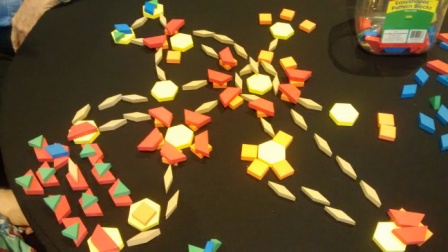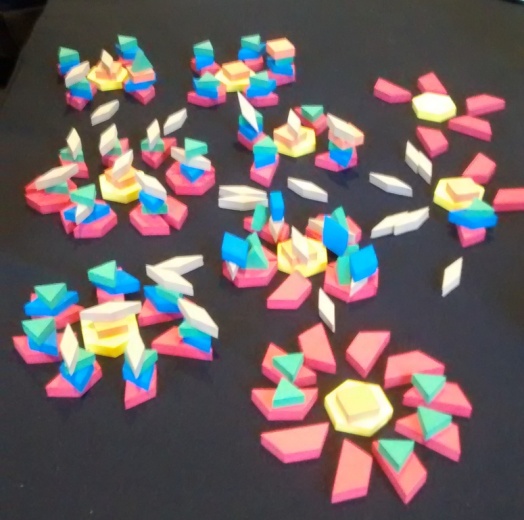It's normally the students who use coloured pattern blocks, but in this workshop it was the educators who used them to visually represent school staffing structures.
According to the Australian Council for Education Research and Queensland Department of Education, Training and Employment’s National School Improvement Tool (2012), ‘Research is revealing the powerful impact that school leadership teams can have in improving the quality of teaching and learning … and establishing strong professional learning communities.’
At this year's Excellence in Professional Practice Conference, I ran a workshop that highlighted one of the tensions identified in my PhD study. When looking at school improvement strategies, leaders often begin with written linear plans.
Participants were invited to use coloured pattern blocks to visually and dynamically represent the relationships and connections of the team structure in their school.
The examples that follow demonstrate that each school setting is different, that leaders in schools grapple with the complexity they face, and that as a teacher leader they attempt to simplify this complexity by making connections.
Teacher leaders often have a great deal of tacit knowledge which may not have been previously articulated. Visual representations may help them to do that. Once articulated, teacher leaders may make this knowledge explicit by utilising it in formal written plans.
The tension is when to plan using a visual representation and when to formalise this plan in writing.
In these examples, orange squares represent leaders, red trapezoids represent teachers, white rhombuses represent vision, blue rhombuses represent the ability to differentiate in class, green triangles represent assessment, and yellow hexagons represent a team.
One workshop participant showed her team structure as a large leadership team (yellow hexagon surrounded by orange squares) with vision filtering down to loosely connected amorphous groups of professional learning teams.

Participants were then asked to rearrange the blocks into a vision of how they would like the teams to operate. In this case, she represented the same leadership team but over layered it with radiating shared vision. Professional learning teams were brought together into a cohesive unit, closely connected to the vision emanating from the leadership team.

These photos were also taken at the same workshop and illustrate how different each school setting is.



What have you learnt from attending professional development workshops?
For more information on ACER’s Excellence in Professional Practice Conference for 2015 visit http://www.acer.edu.au/eppc


